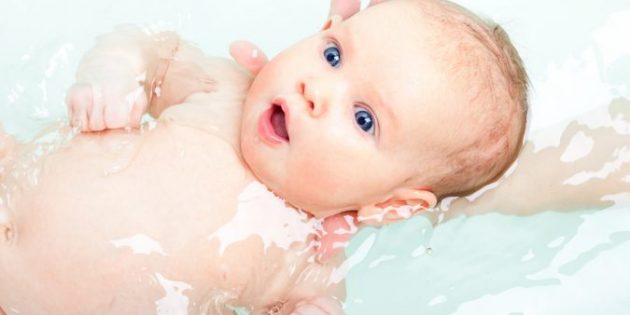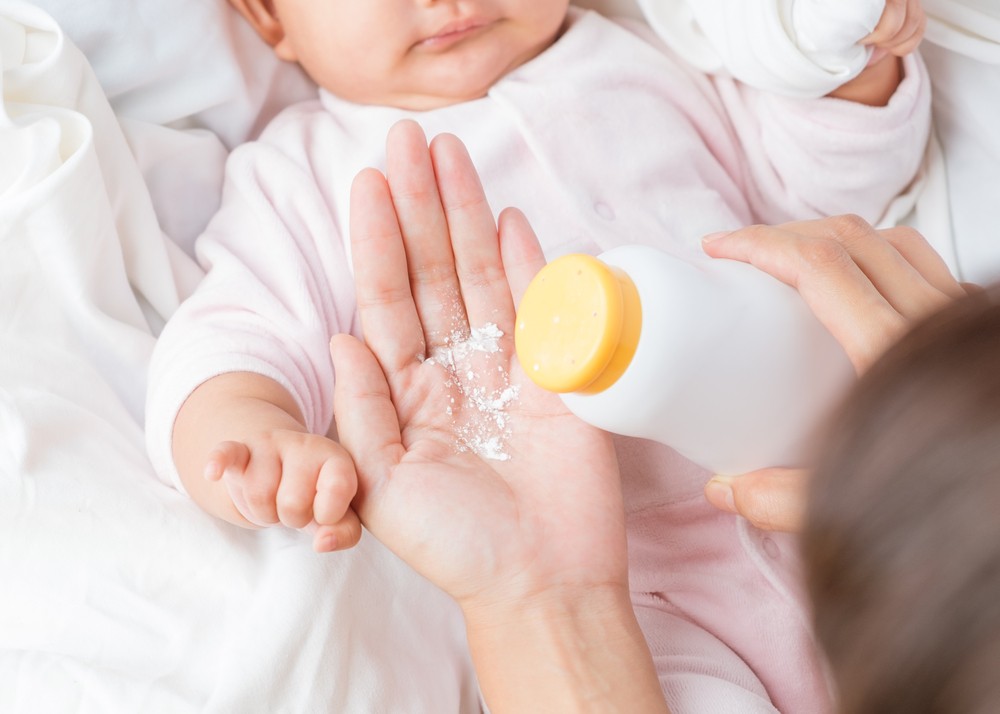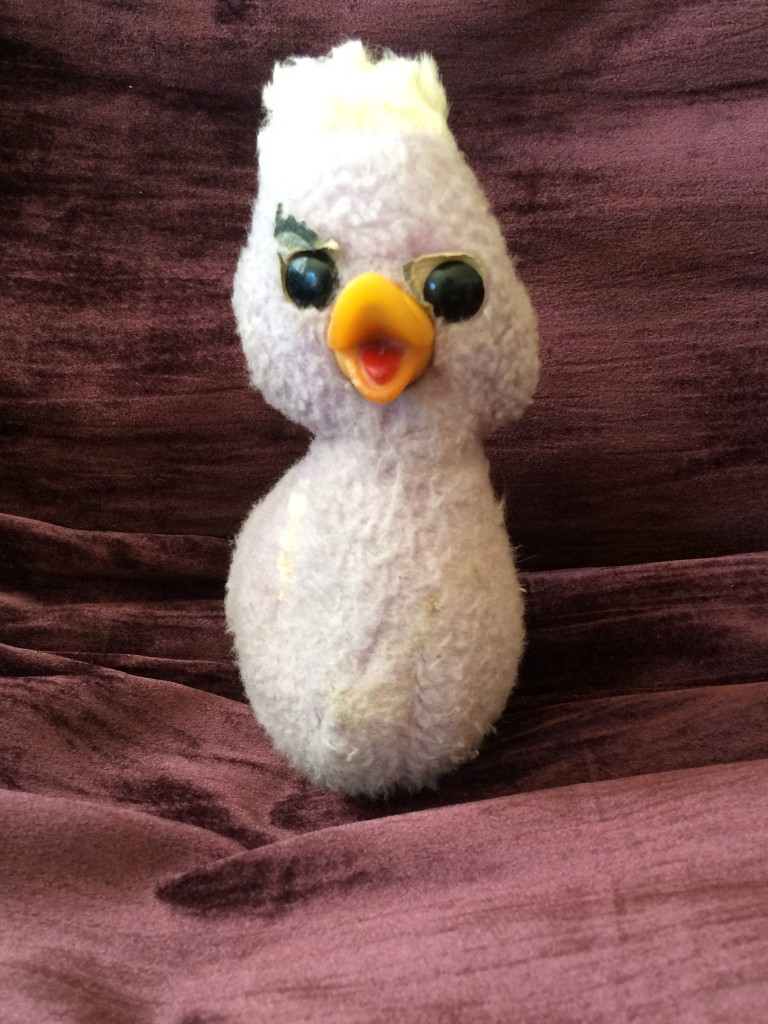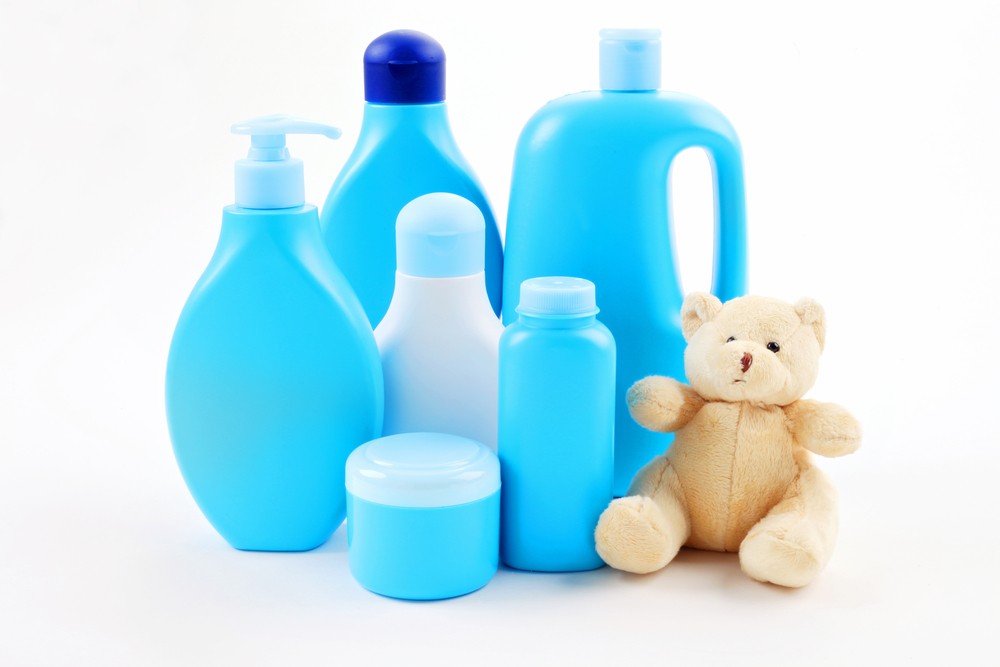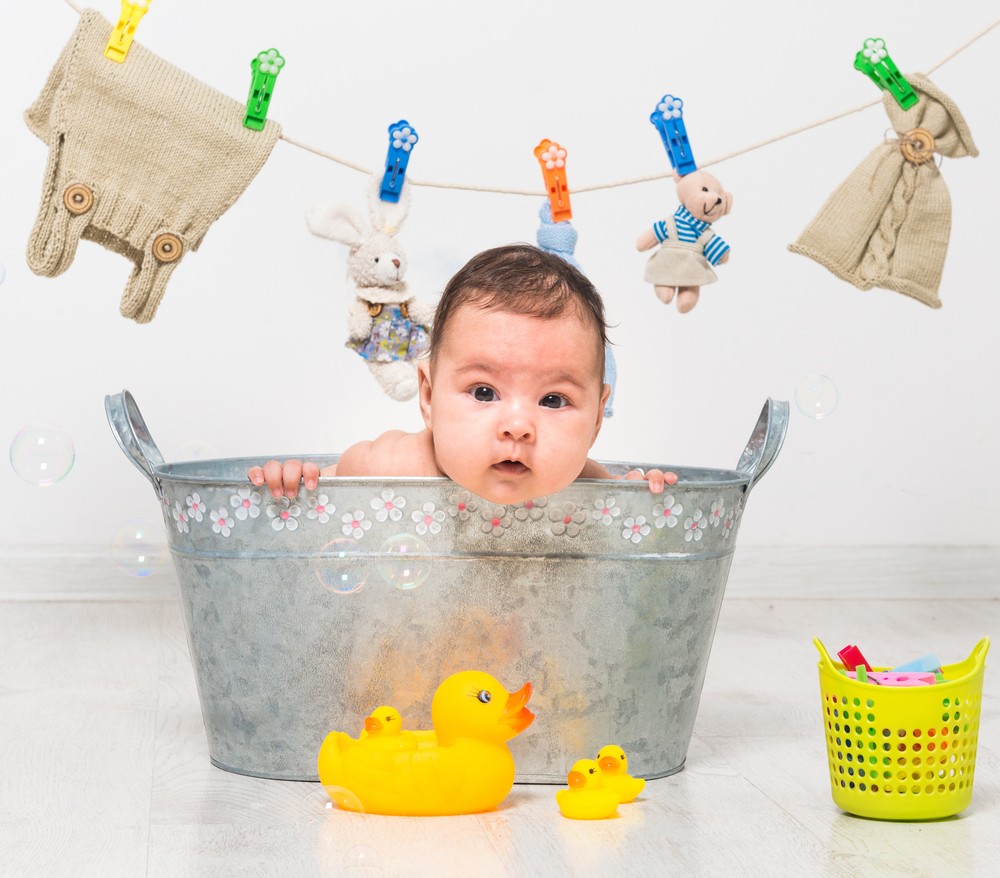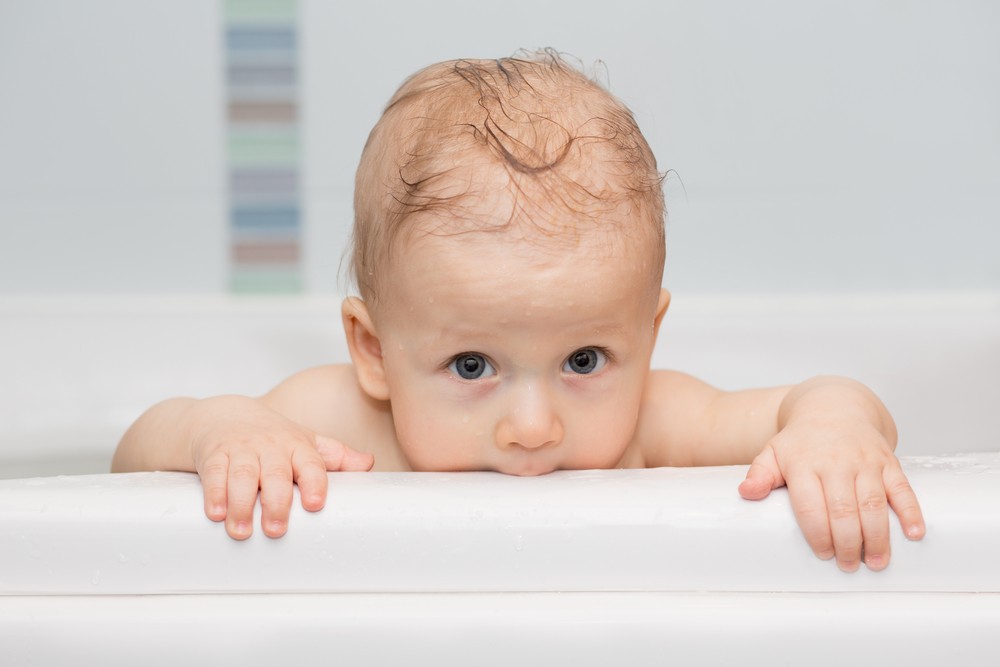“Oh my god,” I murmured.
“What’s wrong?” my husband asked. We were on the couch, our 3-month-old sleeping peacefully in her crib. I was in that read-everything-ever-written-about-parenting phase of new motherhood and was devouring Super Baby Food (CA) by Ruth Yaron, an informative idiosyncratic book about healthy eating. Yaron relates the story of a friend who suffered chemical burns as a toddler after trying to guzzle a bottle of drain opener. Relentlessly teased as a child, he underwent over a dozen painful and unsuccessful surgeries, and remained ashamed of his looks and dribbling even as an adult.
I read out loud to James:
“This is terribly upsetting,” Yaron writes. “But I would rather have you be upset than to have anything like this happen to your child. Children are more important than a sparkling clean house. For your children’s sake, choose only baby-safe products.”
My husband leapt from the couch and rounded up every baby un-safe cleaning product in our home. He filled two buckets’ worth, took them straight out of the house, and gave them to the neighbor.
Drain opener was easy. Everyone knows that liquid drain opener is a caustic chemical that can deform, sicken, or even kill a small child, and we are all quick to install child safety locks and put poisonous chemicals out of reach. But what parents are much less aware of is that conventional baby hygiene products also pose serious threats to our children’s overall health. Even as these products are successfully advertised to parents as “#1 choice of hospitals,” “gentle,” and “doctor approved,” conventional baby products may not be safe for babies.
Why The Worry?
Just last month Johnson & Johnson, the world’s sixth-largest consumer health company, was ordered to pay $72 million in damages to the family of an Alabama woman, Jackie Fox, who died from ovarian cancer. Her family’s lawyers successfully argued that Johnson & Johnson had failed to inform consumers that the use of their talcum powder on the genitals has been linked to ovarian cancer. The most damning evidence against the company was a 1997 memo from a medical consultant comparing the link between hygienic talc and cancer to cigarette smoking and cancer and asserting that any anyone who denies it is “denying the obvious in the face of all evidence to the contrary” (according to the Associated Press).
As a kid, I delighted in powdering Duckie (pictured below) and sticking my nose in her sweet-smelling fur. My parents had no idea I was inhaling asbestos, a known carcinogen, which was an ingredient in baby powder back then. In 1973 manufacturers were required by federal mandate to make talcum powder asbestos-free, but the concern that the talcum powder currently sold as a baby product is carcinogenic remains. A 2015 study of over 2000 women with ovarian cancer found that regular use of talcum powder increased the chance of ovarian cancer by 33 percent. The International Agency for Research on Cancer has classified genital talc as a possible carcinogen.
Cancer aside, the American Academy of Pediatrics in its advice for parents does not recommend using talcum powder on your baby. I called the AAP to find out more. “It can cause breathing problems if the baby inhales the powder,” a staff member explained via email.
But talcum powder is only one of many conventional baby hygiene products you should not be using on a baby’s sensitive skin.
Your Baby’s Largest Organ?
The skin is the body’s largest organ. You’ve probably heard that before, but what does it really mean?
Though it’s not contained like the heart or the lungs, the skin is a protective membrane around your entire body that is made up of related cells that together perform specific functions. Deepti Gupta, M.D., a pediatric dermatologist and skin expert at Seattle’s Children’s Hospital, describes the skin as a “beautiful latticework of cells.” Its two main functions, Gupta tells me, are to provide a barrier against bacterial and viral infections, and to regulate body temperature.
But as much as your skin protects your insides from the outside world, it is also porous, allowing certain substances that you come in contact with to enter your bloodstream. That’s good news for the administration of certain medications (transdermal drug delivery was first approved by the FDA in 1979) — like estrogen cream for menopausal women and nicotine patches for people trying to give up smoking — but potentially bad news for babies. Why? Because babies have a skin-to-weight ratio that is even greater than that of adults, making them more susceptible to potentially toxic substances absorbed through the skin.
By the time she was three months old, our daughter had become a roly-poly butterball with six chins. That’s typical: most infants will weigh three times their birth weight by age one, which would be like a hundred-pound adult gaining 200 pounds in just twelve months. During this period of snowballing growth, a baby’s brain, immune system, and reproductive organs are developing, making the little person in your life even more vulnerable to toxins.
Though Gupta thinks that some of the dangers you read on blogs about exposure to toxic chemicals may be more hype than fact, she advises parents to pay attention to the products they use on their babies’ skin.
“You are putting it all over a baby, and that’s a large surface area,” Gupta says. “You do want to be cautious and careful about the products you use.”
Other doctors are more concerned. Lawrence Rosen, M.D., an integrative pediatrician based in Oradell, New Jersey who has been practicing medicine for 20 years, says that conventional baby care products like soap, shampoo, baby wipes, and diapers often contain chemicals known or suspected to be harmful.
“You can reduce the risk of your child getting hormone disorders and hormone-triggered cancers by reducing your child’s exposure to endocrine disruptors,” says Rosen, who likes to remind parents who are reluctant to make changes that cigarette smoking and asbestos were once considered safe. “It’s all about reducing risk.”
And Now, Let’s Do The Toxins
Rosen’s mentor was Philip Landrigan, M.D., a pediatrician and epidemiologist who is a member of the faculty at Mount Sinai School of Medicine. Landrigan is the co-author of Raising Healthy Children in a Toxic World, and one of the first doctors to warn about the risk of environmental harms to children’s health. On my desk is a report that Landrigan co-authored with several M.D.’s and health professionals. “In Harm’s Way,” details known threats to children’s health, suspected mechanisms, and the peer-reviewed scientific studies that show evidence of harm (download the PDF from this link). The report is 140 pages long.
But understanding the biochemistry and mechanisms of potential harm is less important than being aware of what to avoid. Here are some highlights:
Antibacterials: We are discovering that, contrary to popular belief, antibacterial agents are actually harmful when used daily. For one thing, they kill bacteria indiscriminately. Our babies are cohabitating with beneficial bacterial that play a crucial role in good health. You don’t want to kill off the zoo in you. For another, the active ingredient in most liquid antibacterial soaps, triclosan, has also been linked to liver toxicity and thyroid dysfunction. According to the Environmental Working Group, babies ingest more chemicals from their hands than from mouthing toxic products, so it is especially important not to use antibacterial soap or hand sanitizer on them. Triclosan has gotten the most scrutiny recently but there’s no reason to think that other antibacterial agents are any safer. The biggest kicker here is that several studies, including this one and this one, have shown that plain soap and water works just as well as antibacterial soap. And while there is no evidence that antibacterial soap and wipes make people healthier, one double-blind study did find evidence that using antibacterials actually makes chronically ill people sicker.
Carcinogens: Known and suspected cancer-causing agents, like petroleum-derived food dyes that have been linked to cancer, some of which are banned in Europe, are used in many products, including toothpaste and foods marketed to young children in America. Though mainstream sources downplay the risks, conventional toothpaste, packaged foods, and soft drinks often contain artificial sweeteners that may also be carcinogenic. Parabens, which have been linked to breast cancer, are also found in skin care products, sunscreens, cosmetics, shampoos, and even food.
Dioxins: The term dioxin refers to a class of highly toxic compounds that are a fat-soluble (which means they accumulate in fat tissue) byproduct of manufacturing.According to the World Health Organization, 90 percent of human exposure to dioxins comes from eating meat, dairy products, and fish. But industry’s dirty little secret is that dioxins can also be found in trace amounts in conventional white plastic diapers and other bleached products, like paper towels and napkins.
Endocrine disruptors: These are substances that mimic the body’s internal chemical messaging system and can interfere with your baby’s endocrine system — the system that produces hormones that regulate metabolism, growth, and reproductive organs. Endocrine disruptors in the food, water, and environment are thought to be contributing to precocious puberty (which has been linked to cancer), and a host of other health disruptions, including childhood obesity and diabetes. Pesticides are endocrine disruptors that are found in measurable amounts in much of the food we eat, which is a compelling reason to buy organic or locally grown food, especially for your kids.
Sacramento mom Nichole Sawatzky realized how imperative it was to stop exposing her daughters to toxins when topical allergy testing left a permanent scar — a burn mark — on her 16-month-old’s back because the allergy was so severe.
“We live in a toxic world,” Sawatzky, a teacher with 15 years experience, says. “We all react to things that are not natural. It causes physical degeneration.”
Sawatzky believes toxic exposures before birth are partly to blame for her now 6-year-old daughter’s many health problems, which include multiple chemical sensitivities, food allergies, seizures, stomachaches, and headaches. She tells me she colored her hair throughout her pregnancy, ate a diet of conventional food that was lacking in nutrients, and had Cesarean births — all of which she thinks negatively affected her daughter’s health.
“I feel like I frontloaded her with toxic chemicals, that I exposed to her things as she was growing that I could have prevented,” Sawatzky explains. Sawatzky urges families to start making lifestyle changes to reduce their exposure to toxins before they get pregnant. “You can do a lot to prevent problems by eliminating things ahead of time,” she says.
If reading this feels overwhelming (I know it overwhelms me), here’s a cheat sheet: don’t use any baby product — from shampoo to wipes to diapers — that lists chemical ingredients you can’t pronounce or understand. And don’t use any baby product, even if it’s advertised as “natural,” that contains “fragrance” as a listed ingredient either.
It’s likely that those “proprietary blends of good-smelling stuff,” as pediatrician Lawrence Rosen calls them, are bad for your baby. “You don’t know what’s in it and it’s possibly toxic,” he says.
So What Should You Use On Your Baby Instead?
William Parker, Ph.D., Associate Professor of Surgery at Duke University Medical School and an expert on the immune system and the human microbiome, does not use shampoo on his hair. Parker tells me he stopped two years ago after he realized that chemical shampoos strip the hair of its natural wax, which you then replace with sheep wax (the lanolin in moisturizing shampoos and conditioners).
If you’ve never heard of the No ’Poo movement, the idea of not using shampoo may sound crazy.
I used to think so too.
But the more I research this topic, the more I realize that no shampoo might be the best (and least expensive) option for babies. Organic baby products with just a few recognizable ingredients are great, but they tend to be expensive and difficult to find in stores.
Even mainstream medical practitioners are beginning to understand that there is no need to wash a newborn. Though her first baby was bathed right away, hospital staff at the University of Washington Medical Center waited 24 hours before offering a bath to Gupta’s second child, born just five weeks ago. A bath just after birth disrupts parent-baby bonding and dysregulates a newborn’s body temperature, according to pediatrician Susan Markel, M.D., author of What Your Pediatrician Doesn’t Know Can Hurt Your Child (CA). It also deprives the newborn of the skin-protecting vernix, and replaces a baby’s intoxicating natural scent with a synthetic smell (designed to mimic the smell of a baby).
But the most compelling reason not to bathe a newborn in the hospital is the branded soap being used in American hospitals. In hospitals in Scandinavia when brand name baby products like infant formula are used, the brand is not shown to new parents. In American hospitals the brands are prominently displayed. In fact, the hospital’s seal of approval becomes a reason that parents then seek out these products after they take the baby home. Don’t be duped by this marketing ploy. Read the ingredients. The conventional baby wash used in American hospitals is anything but gentle. It is a brew of synthetic chemicals you want to keep away from your baby.
Warm Water And A Washcloth, It Turns Out, Is Really All You Need To Clean Your Baby
If your baby’s skin gets dry (which it probably won’t if you stop frequent bathing, use little if any soap, eschew antibacterial products, and skip the shampoo), use coconut oil (preferably organic) as a moisturizer, instead of conventional lotions.
Use glass baby bottles, instead of plastic ones, and skip the plastic sippy cups (a toddler can learn to use a regular cup quickly and easily).
Choose the least toxic diapers you can find — we used cloth on our four kids — and have your baby go diaper free as often as possible. Air and sunlight are the perfect cure for diaper rash, which your baby might not get in the first place if you keep her out of diapers, like they do in Vietnam.
The next best choice is to find the least toxic products you can.
Rosen, the pediatrician in New Jersey, suggests parents check the ratings found at the Environmental Working Group’s website before buying products.
That day my husband jumped off the couch to round up the chemical cleaning products in our house was a milestone for our family — a turning point in our awareness that led us to do things very differently afterwards.
These days we make our own laundry detergent (which is cheaper than buying it conventionally), wash our hands with plain soap and water, brush our teeth with natural toothpaste or just with baking soda, use cloth dishrags and napkins instead of bleached paper products, store food in glass containers, and feed our family healthy, whole, fresh foods as much as we can. We’re far from perfect. But we’re trying.
Some 1,200 lawsuits are still outstanding against Johnson & Johnson. The company has said it plans to appeal. They claim there is no causal link between their product and cancer.
“Fifty years from now we’re probably going to be in a position to say these chemicals harmed so many kids,” Rosen says. “I don’t believe in waiting when it’s so easy to avoid using them now.”
Jennifer Margulis, Ph.D., is an award-winning journalist, author of Your Baby, Your Way (CA), and co-author with Paul Thomas, M.D. of The Vaccine-Friendly Plan: Dr. Paul’s Safe and Effective Approach to Immunity and Health (CA) (Ballantine, August 2016).
